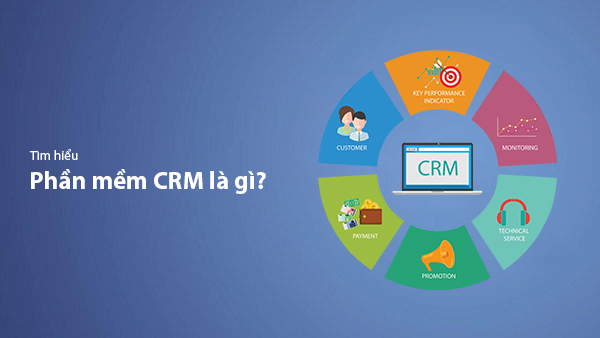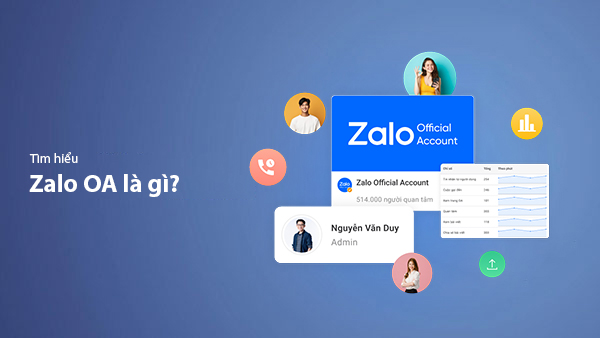Effective Strategies to Build Sustainable Customer Relationships
- Published on

- Why Is Building Customer Relationships Important?
- Understanding Your Customers
- Identifying Your Target Customer Profile
- Collecting Customer Information
- Analyzing Shopping Behavior and Habits
- Building Effective Engagement Strategies
- Effective Communication
- Post-Sales Customer Care
- Creating Valuable Content
- Building Trust and Loyalty
- Ensuring Product/Service Quality
- Demonstrating Transparency
- Promoting Loyalty Programs
- Leveraging Technology to Optimize Customer Relationships
- Integrating a CRM System (Customer Relationship Management)
- Automating Communication
- Personalizing Customer Experiences
- Measuring and Continuously Improving
- Monitoring Customer Relationship Metrics (NPS, CRR, CLV)
- Gathering Customer Feedback
- Adapting Strategies to Trends
- Conclusion
In modern business, building sustainable customer relationships is not just a trend but a core factor determining the success or failure of a company. Strong customer relationships bring unparalleled benefits such as increased revenue, retaining loyal customers, and improving brand image. In fact, loyal customers spend up to 67% more than new customers, highlighting that retaining existing customers is an incredibly effective and cost-saving strategy.
Why Is Building Customer Relationships Important?
- Increase Customer Lifetime Value (CLV): When customers feel cared for and supported, they not only return but also recommend your products/services to others.
- Build trust and brand differentiation: A business that maintains positive, transparent communication and thoughtful customer care will leave a lasting impression, surpassing competitors.
- Reduce marketing costs: Retaining old customers is less expensive than finding new ones, optimizing your marketing budget.
This article will guide you on How to build sustainable customer relationships, including understanding your customers, effective communication, and leveraging technology to optimize experiences. Each strategy is designed to help you not only retain current customers but also foster strong loyalty to your brand.
Understanding Your Customers
Before building sustainable customer relationships, the first step is to understand who your customers are, their needs, and their desires. A successful business strategy always begins with identifying your target customer profile and optimizing how you engage with them.
Identifying Your Target Customer Profile
Target customers are those whose needs align with the products or services you offer. To accurately identify them, answer the following questions:
- Demographics: Age, gender, income, occupation, location.
- Psychographics: Interests, consumer behavior, buying motivations.
- Needs and problems: What do they need? How can your products/services solve their problems?
Accurately identifying these factors will help you optimize your marketing messages and create content that is appealing and targeted.
Collecting Customer Information
Collecting customer data is key to gaining deeper insights into their behaviors and preferences. You can use methods such as:
- Surveys: Send direct or online surveys to gather essential information.
- Tracking interactions on websites and social media: Use tools like Google Analytics to understand what your customers are interested in.
- Leveraging CRM (Customer Relationship Management): This system helps store and manage customer data efficiently, enabling personalized marketing campaigns.
Analyzing Shopping Behavior and Habits
An important step in understanding customers is analyzing their shopping behaviors:
- Shopping timing: When do they usually shop? (e.g., weekends, holidays).
- Preferred channels: Do they prefer shopping through social media, websites, or physical stores?
- Products of interest: Based on purchase history, you can suggest suitable products.
By analyzing and leveraging this data, you can create more effective customer engagement strategies.
Building Effective Engagement Strategies
Once you understand your customers, the next step is to build engagement strategies to connect with and retain them. An effective engagement strategy not only enhances satisfaction but also turns customers into advocates for your brand.
Effective Communication
Communication is key to establishing trust and personal connections with customers. Here are some ways to improve communication quality:
- Personalized communication: Use the customer’s name in emails and send messages tailored to their preferences and shopping history. For instance, a welcome email or a birthday-specific offer can make customers feel special.
- Regular updates: Notify customers about promotional programs, new product launches, or useful content related to your products.
- Utilize chatbots and live support: Chatbots help answer common questions quickly, while customer service teams handle more complex issues.
See more: How to optimize email marketing
Post-Sales Customer Care
A major mistake is focusing solely on sales and neglecting the post-sale stage. This is when you strengthen your relationship with customers, encouraging them to return. Some effective methods include:
- Sending thank-you notes: A thank-you email or message after each transaction shows professionalism and care.
- Conducting surveys: Ask customers about their experiences to continuously improve products and services.
- After-sales services: Ensure customers always receive attentive support after their purchase, such as warranty policies or product usage guides.
Creating Valuable Content
Providing valuable content shows customers that your brand not only sells products but also offers knowledge and useful solutions:
- Blogs or instructional videos: Share tips on using your products or solutions to common customer issues.
- Interactive social media content: Create posts, short videos, or livestreams to engage with customers naturally and authentically.
Read more: Guide to Creating Evergreen Content
Building Trust and Loyalty
Customers will only return if they trust your brand and feel valued. Building trust and loyalty is a long-term process that requires consistency and commitment from the business.
Ensuring Product/Service Quality
Nothing builds trust better than a product/service that meets or exceeds customer expectations. Be sure to:
- Keep promises: If you commit to delivery in three days, ensure it’s on time.
- Quickly address complaints: Don’t let customers wait too long when they encounter issues.
Demonstrating Transparency
Transparency is the foundation of trust. This includes:
- Clear pricing policies: Ensure customers are not surprised by hidden fees.
- Public information: Always be honest in conveying information about your products or services.
Promoting Loyalty Programs
Customers always appreciate recognition and rewards for their support. Loyalty programs such as:
- Special offers: Provide discount codes or gifts for long-time customers.
- Point systems: Allow customers to redeem points for gifts or discounts.
These strategies not only retain customers but also encourage them to spend more.
Leveraging Technology to Optimize Customer Relationships
In the digital age, adopting tools and technological solutions not only helps manage customer relationships effectively but also creates seamless and personalized experiences.
Integrating a CRM System (Customer Relationship Management)
CRM is an indispensable tool for tracking and managing customer information. Key benefits of CRM include:
- Data management: Store transaction history, contact information, and customer feedback.
- Optimizing engagement strategies: CRM helps analyze customer behavior and adjust marketing strategies accordingly.
- Enhancing teamwork efficiency: Related departments can easily access customer data for collaboration.
Popular CRM software includes Salesforce, HubSpot, and Zoho CRM.
See more: Top 15 CRM software for small businesses
Automating Communication
Automation helps save time and maintain consistent communication with customers. Common applications include:
- Email marketing: Send periodic emails with personalized content, such as promotions, birthday greetings, or new product information.
- Chatbots: Quickly answer basic questions and support customers 24/7 without staff intervention.
Benefits of Automation
- Faster response times: Customers always feel supported immediately.
- Cost savings: Reduces workload for customer care teams.
Personalizing Customer Experiences
Personalization is crucial for customers to feel valued by your brand. Some effective personalization methods include:
- Product recommendations: Suggest suitable products based on shopping history or browsing habits.
- Creating tailored content: Segment customers into groups and provide content or offers tailored to each group.
Measuring and Continuously Improving
To maintain sustainable customer relationships, businesses need to continuously measure performance and improve strategies based on actual data.
Monitoring Customer Relationship Metrics (NPS, CRR, CLV)
Important metrics help evaluate customer satisfaction and loyalty:
- NPS (Net Promoter Score): Measures how likely customers are to recommend you to others.
- CRR (Customer Retention Rate): The rate at which customers return for repeat purchases.
- CLV (Customer Lifetime Value): Represents the total profit a customer brings over their lifetime.
Use these metrics to identify areas for improvement in services and engagement strategies.
Gathering Customer Feedback
Customer feedback is a valuable resource to better understand their needs and experiences. Methods to collect feedback include:
- Periodic surveys: Send survey forms via email or after a transaction is completed.
- Listening on social media: Monitor comments, reviews, and conversations about your brand.
Adapting Strategies to Trends
The business world is ever-changing, and your strategies need to be updated to meet new demands:
- Monitor competitors: Learn from successful strategies of competitors.
- Stay on top of trends: Don’t miss opportunities to leverage new trends in marketing and customer care.
Conclusion
Building sustainable customer relationships not only helps businesses retain customers but also expands their potential customer network, increases revenue, and enhances their brand position in the market.
- Retain current customers: Reduces the cost of finding new customers.
- Increase brand value: Positive relationships ensure your brand is recommended and mentioned by customers.
Start today by applying the strategies shared in this article. Investing in customer relationships is an investment in the long-term and sustainable growth of your business.
Learn more How to Optimize Customer Experience on Your Website
Latest Posts

Lesson 26. How to Use break, continue, and return in Java | Learn Java Basics
A guide on how to use break, continue, and return statements in Java to control loops and program execution flow effectively.

Lesson 25. The do-while Loop in Java | Learn Basic Java
A detailed guide on the do-while loop in Java, including syntax, usage, examples, and comparison with the while loop.

Lesson 24. How to Convert Decimal to Binary in Java | Learn Basic Java
A guide on how to convert numbers from the decimal system to the binary system in Java using different methods, with illustrative examples.

Lesson 23. How to Use the While Loop in Java | Learn Java Basics
Learn how to use the while loop in Java with syntax, real-world examples, and practical applications in Java programming.
Related Posts

What is CRM Software? Top 15+ Best Customer Relationship Management Software
Discover the definition of CRM software, its role in customer relationship management, and a list of 15+ top CRM solutions to help businesses enhance customer service performance and achieve sustainable growth.

What Is Local Guide? Benefits of Becoming a Local Guide on Google Maps
Local Guide is a community program by Google Maps where users can contribute reviews, photos, and location information to improve map data. This article explains what Local Guide is and the benefits of being an active member.

What is Zalo OA? A Detailed Guide to Creating Zalo Official Account for Businesses
Zalo Official Account (Zalo OA) is a crucial tool that helps businesses connect with customers and optimize their online business operations. This article provides a step-by-step guide on how to create a Zalo OA from A to Z.

What is Zalo Ads? A Guide to Running Effective Zalo Ads
Discover what Zalo Ads are and learn how to run effective Zalo advertising campaigns to reach customers and boost sales in the digital era.

